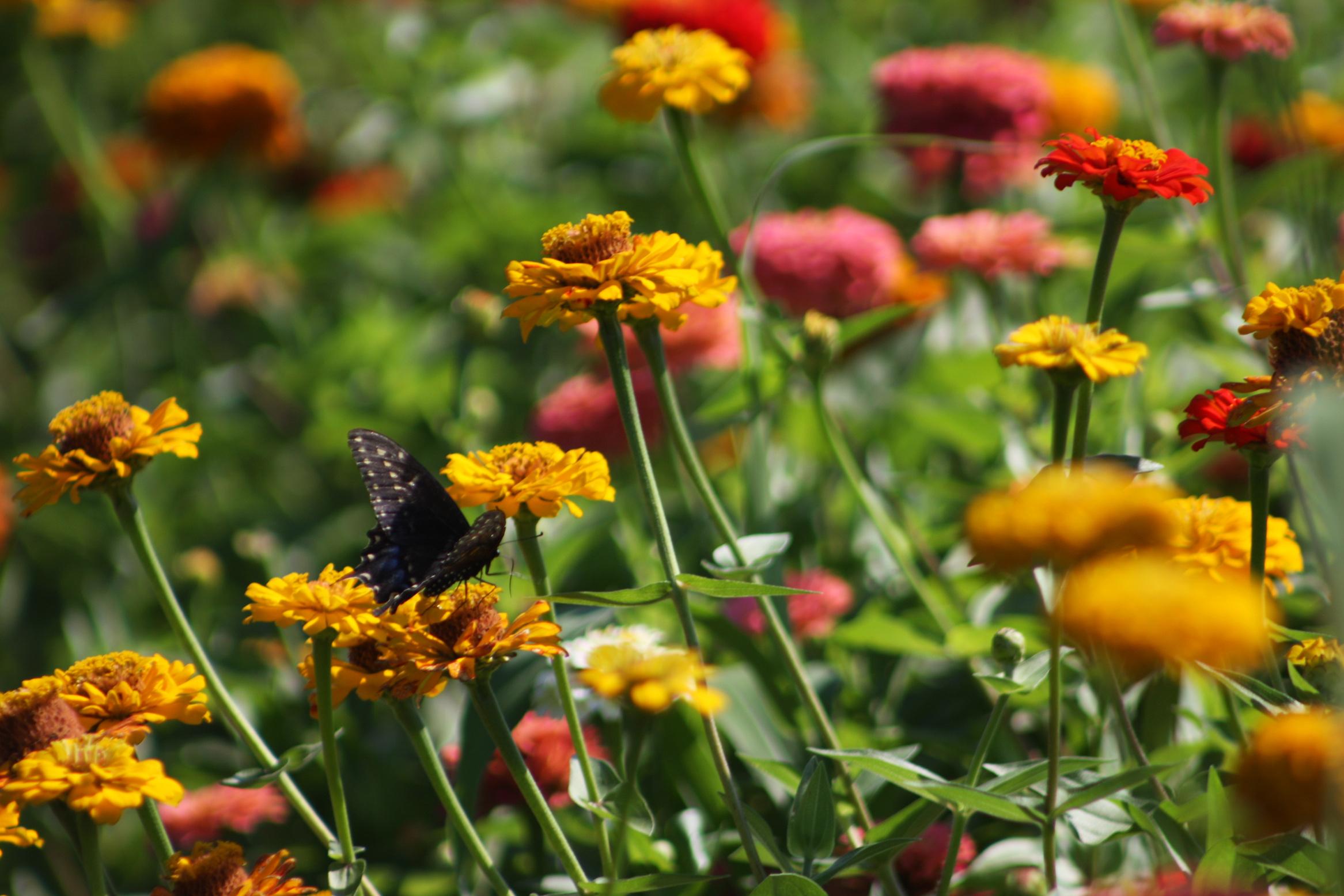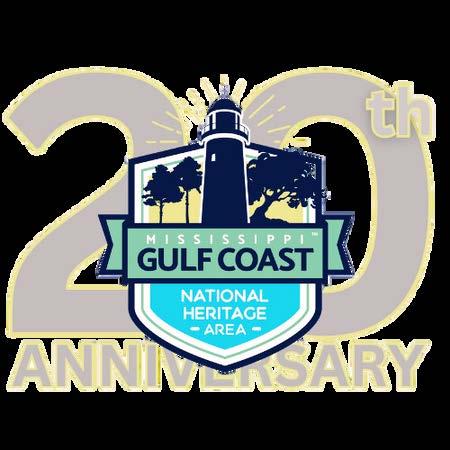

MISSISSIPPI GULF COAST NATIONAL HERITAGE AREA PUBLICATION | SPRING 2025



MISSISSIPPI GULF COAST NATIONAL HERITAGE AREA PUBLICATION | SPRING 2025
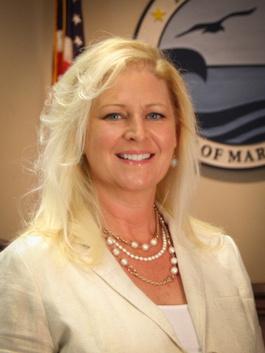
As spring blooms, we find ourselves surrounded by the beauty of renewal. Springtime invites us to reflect on our heritage, embrace our community, and celebrate the landscapes and traditions that make the Mississippi Gulf Coast extraordinary.
This issue highlights the rich history, traditions, and natural wonders that define the Mississippi Gulf Coast National Heritage Area. From stories of our historic Mom & Pop markets to the revival of maritime legacies, this edition is filled with reminders of how our past continues to shape our present.
Outdoor enthusiasts can paddle through the Davis Bayou Blueway, where the sights of our coastal marshlands offer an unforgettable experience. As the marsh comes alive in spring, kayakers and nature lovers alike can drift through winding waterways, catching glimpses of great blue herons, ospreys, and the occasional alligator basking in the sun. For those who prefer land-based adventures, exploring blossoming you-pick flower farms provides a colorful and fragrant way to embrace the season’s vibrancy.
Food is always at the heart of Southern hospitality, and this edition is brimming with flavors of the coast. Whether it’s the beloved Low Country Shrimp Boil or the refreshing Picayune Frog Lemonade, our culinary highlights are a nod to the tastes and traditions that bring us together. As we step into this vibrant season, I encourage you to embrace the stories within these pages, connect with the people and places that make our region unique, and find inspiration in the renewal that spring brings.
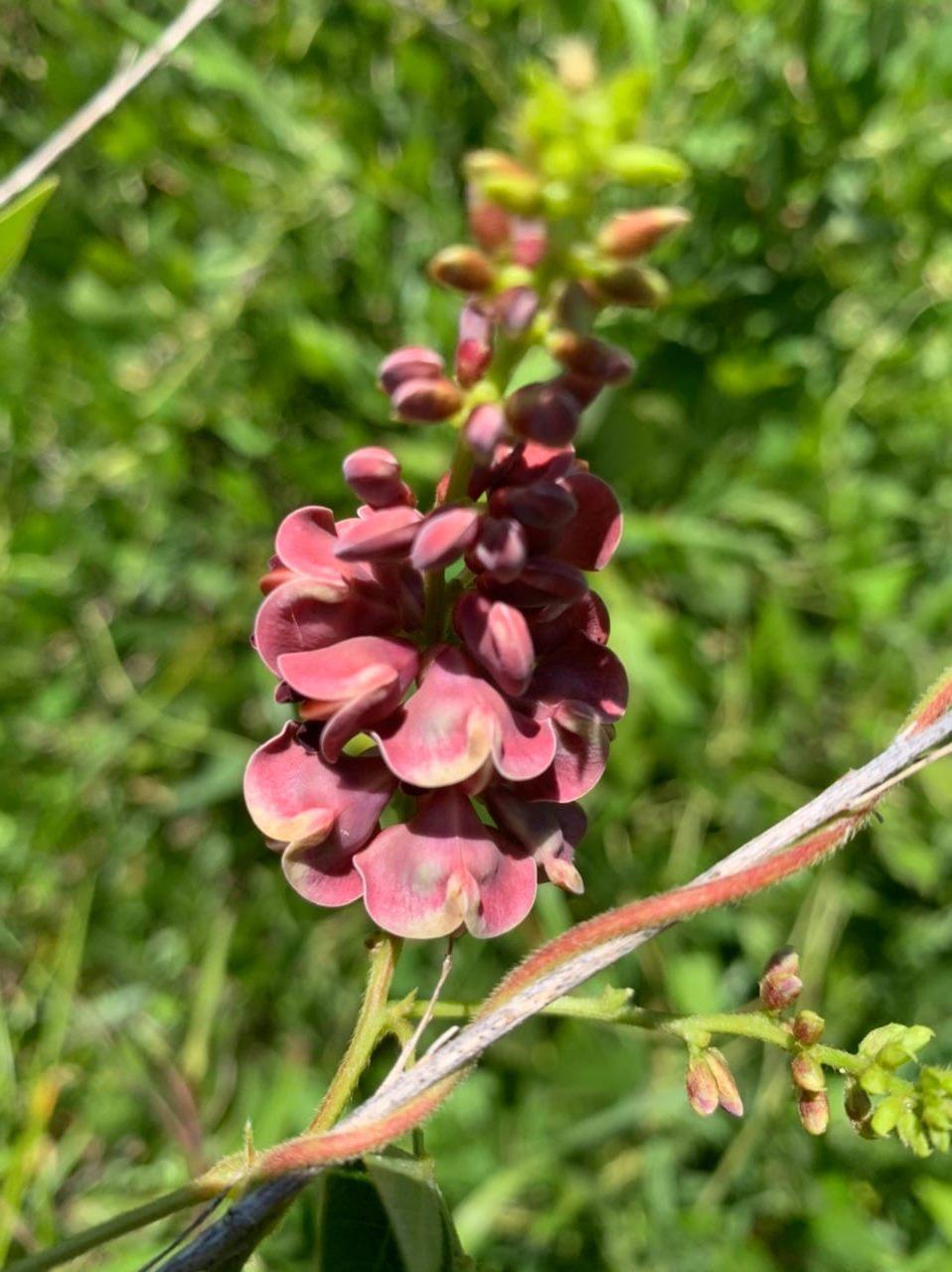
MISSISSIPPI
JoeSpraggins,ExecutiveDirector
RhondaPrice,MSCoastNHADirector
AndrewBarrett,HeritageCoordinator
ChelseaPrince,OutreachCoordinator
JeffRosenberg,HeritageCoordinator
RoxAnnRankinWicker, CommunicationsCoordinator
JoyceHart,AdministrativeAssistant
MarieLewis,AdministrativeAssistant
U.S.Senators
CindyHyde-Smith
702HartSenateOfficeBuilding Washington,DC20510
Phone:(202)224-5054
RogerWicker
555DirksenSenateOfficeBuilding Washington,DC20510
Phone:(202)224-6253
U.S.Representative(District4)
CongressmanMikeEzell
443CanonHOB Washington,DC20515
Phone:(202)225-5772

FrontCoverPhoto:
CharnleyNorwoodHouse, RoseGardenintheSpring
Rhonda Price Director, Mississippi Gulf Coast National Heritage Area

ENHANCE, CONSERVE AND PROVIDE CONNECTIVITY to cultural resources of a unique and defined area through identification, interpretation and promotion.
CREATE AUTHENTIC EXPERIENCES and serve as a source of pride. Providing increased awareness and appreciation of their environment, history, culture, traditions and lifestyles.
PROMOTE ECONOMIC SUSTAINABILITY of heritage resources that benefit the entire region and support the long-term enhancement and conservation of those qualities that make the six counties of the MS Coast NHA unique.
TELLING THE AREA’S NATIONALLY SIGNIFICANT STORY to residents and visitors through activities and partnerships that celebrate the area’s unique history, people, traditions and landscapes.
Your MS Coast NHA is a partnership of communities, businesses, governmental agencies, non-profit organizations and individuals who value the region’s rich cultural and environmental diversity, history, natural beauty and traditions.

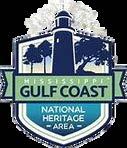
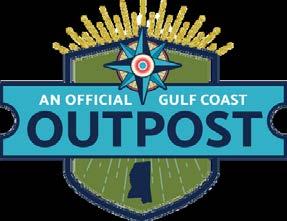


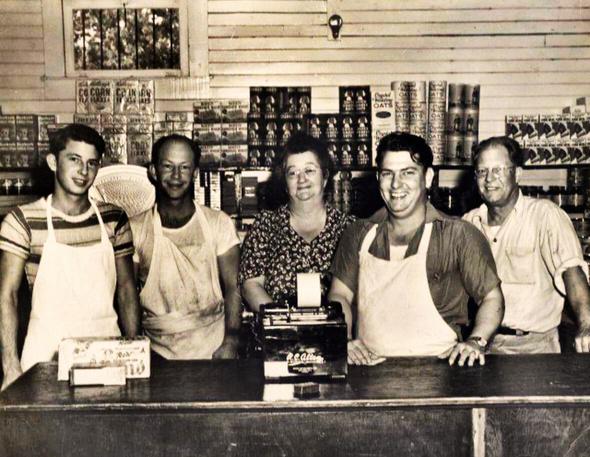
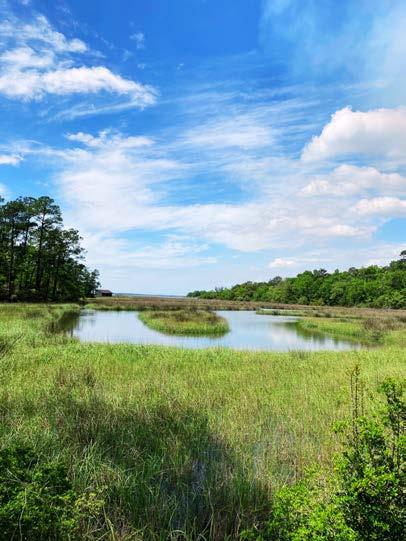

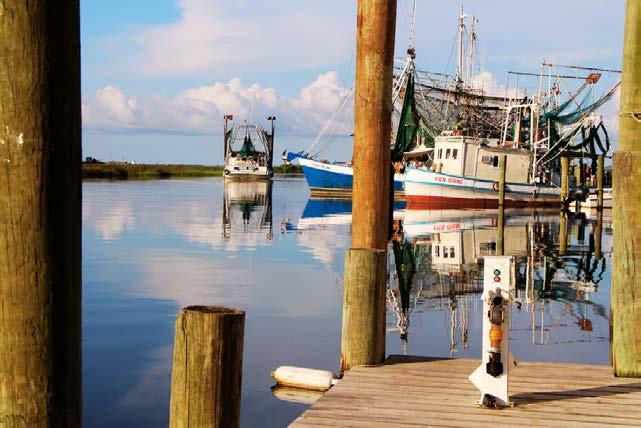
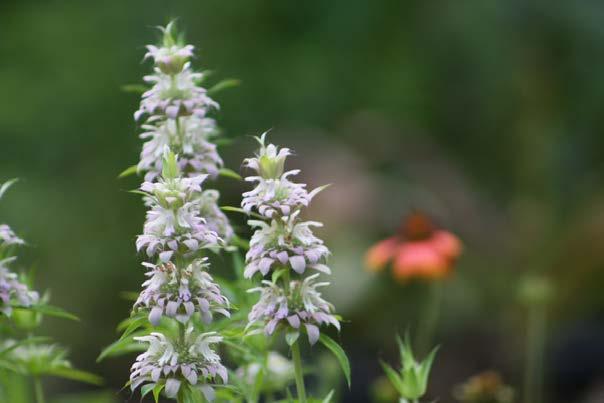


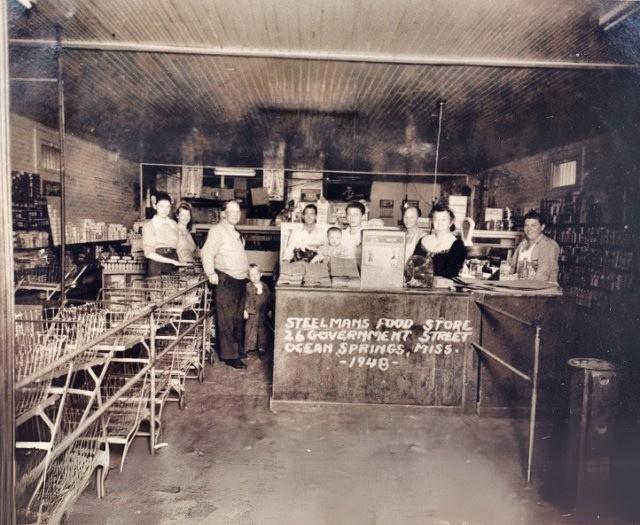

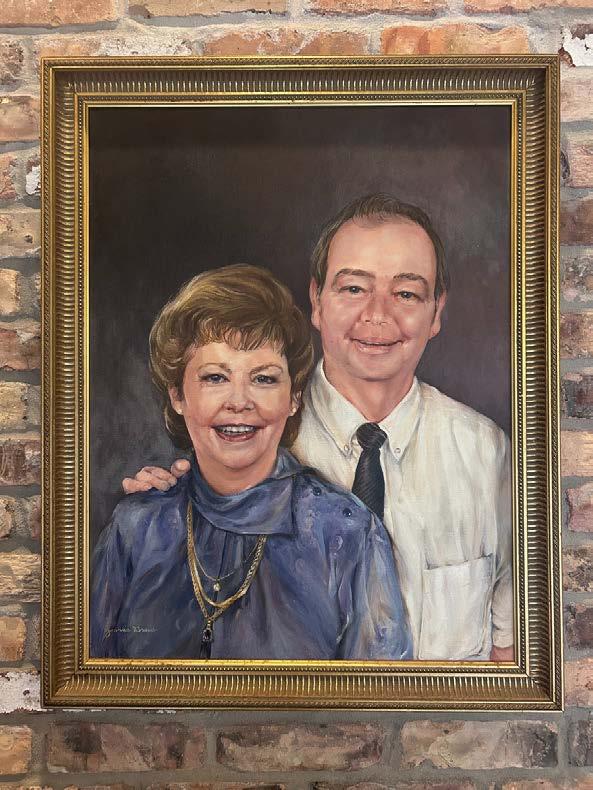
Broome’s Grocery wasn’t just a store it was a community hub. The Broomes extended credit to families in need through charge accounts, a lifeline for many during those tough times of the 80s. I remember the excitement of the weekly drawing at Broome’s, where shoppers would punch their cards with each purchase, hoping to win cash prizes. When my mama’s name was drawn one week, it felt like we’d won the lottery!
In 2012, the 15,000-square-foot building underwent a significant renovation, featuring a new breezeway, a completely redesigned interior, and updates, such as moving the seafood operations to an exterior building. By November 2013, the store reopened in its current location as a lunchtime buffet and catering company. Under the Broomes' stewardship, it exudes the charm and warmth of the classic "Mom & Pop" shop, where everyone knew your name and a vibrant sense of community thrived. Despite its evolution over the years, the timeless heart of the Government Street store remains intact today.
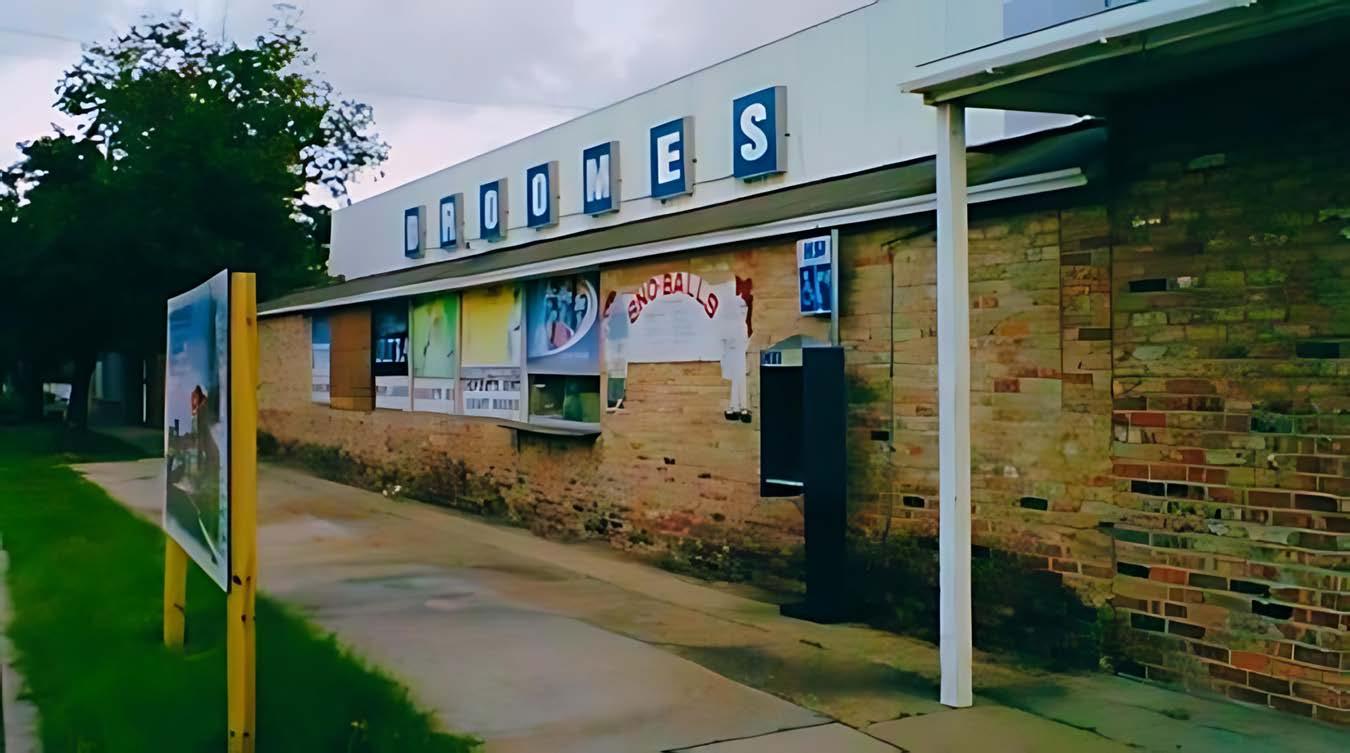
Another noteworthy “Mom & Pop” market was started by the Steelman family. Their journey in the grocery business is a story of perseverance, family dedication, and the changing tides of small-town commerce. With only $37 in his pocket, Charles J. Steelman took a bold step into private business, having learned the trade while working at the Black and White Store in Ocean Springs. In April 1939, he temporarily set up the Steelman Meat Market on Washington Avenue before moving operations a month later to 35 Government Street, where Steelman’s Food Store and Meat Market officially opened.
Through World War II, the store’s fate reflected the family’s sacrifices as several Steelman men left to serve their country, forcing the store to close temporarily. But in 1946, with resilience and renewed hope, the family reopened, modernizing their space by removing the second story, once claimed by roosting pigeons. Over the years, ownership shifted among family members, with Charles Arnold “Pee Wee” and Virginia Steelman taking over operations in the 1950s. Their youngest brother, Ronald, recalled the demanding nature of the grocery trade, live chickens penned out back, weekly trips to the French Market in New Orleans for fresh produce, and local farmers supplying the store with cattle and pigs.

By the early 1960s, however, the landscape of grocery shopping was changing. Supermarkets began to overshadow family-run stores, and in time, Pee Wee Steelman closed the doors of Steelman’s Food Store for good. As luck would have it, Pee Wee continued his trade as a butcher at Broome’s Grocery until his passing. Though the store is no longer there, the memory of its humble beginnings and community spirit remains a treasured part of Ocean Springs’ history. Today, the building serves as the restaurant, bar, and entertainment venue, Government Street Grocery.
The sights, sounds, and faces of Ocean Springs are forever etched in my heart. I can still feel the warmth of those sunlit days with Taw Taw by my side, driving through town, a belly full of Lil’ Smokeys, and a world of stories around us. Those moments weren’t just errands, they were life lessons, quietly teaching me about kindness, community, and the beauty of simple connections. The heart of Ocean Springs may have evolved over the years, but I believe the soul of those small-town grocers and the families who poured their hearts into them still lingers in every corner of this place I call home.
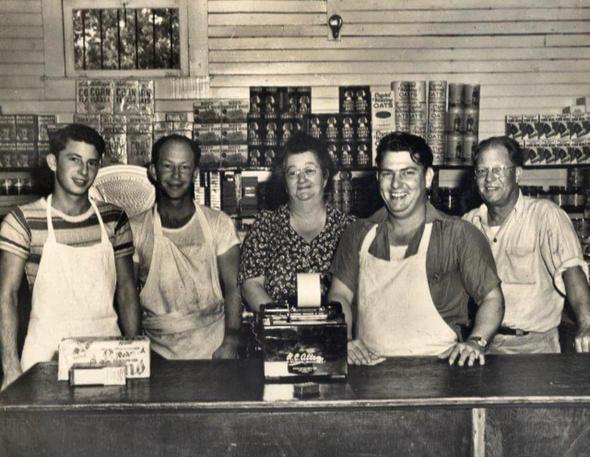
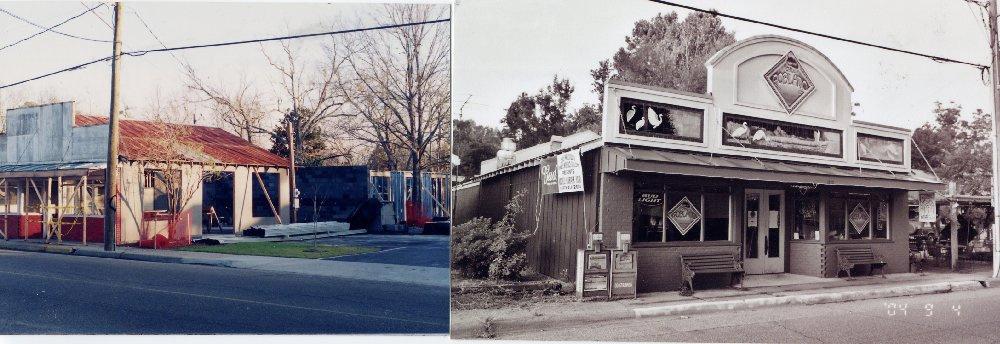

Preserving Preserving Neighborhood Neighborhood Histories Histories
Words by Jeff Rosenberg
Words by Jeff Rosenberg
Photos Courtesy of Ray L. Bellande
Photos Courtesy of Ray L. Bellande


Carroll Benton Ishee, set out on an extraordinary quest to discover his true calling. His life journey, marked by determination, innovation, and a deep connection to his surroundings, has left a lasting legacy on the Gulf Coast community through his architectural masterpieces.
While “Ishee Homes” can be found across the Mississippi Gulf Coast, who exactly is Carroll Ishee?
Born in 1921, Carroll grew up with his parents, sister, and a close-knit group of friends in Hattiesburg, Miss. In 1940, Ishee joined the Mississippi National Guard and would go on to perform with unwavering courage in World War II, earning the prestigious Silver Star for gallantry in action. His military service instilled a hunger for purpose and a broader worldview. He and his wife, Gladys Rae, married in 1943. Following the war and seeking new horizons, the Ishee family moved to Seattle, Wash., only to find the climate unappealing. They would soon return to Mississippi, determined to carve a meaningful path forward.
Initially exploring a career in law, Carroll Ishee enrolled at the Mississippi School of Law in Jackson in 1946. While he did not excel academically, his confidence and determination would carry him through, and he successfully passed the bar exam in 1947. Following this achievement, the Ishees would relocate to Biloxi, a place where Gladys made fond memories during her childhood. There, Carroll joined a local law firm, but it soon became clear that the legal profession did not ignite his passion. Refusing to settle, Ishee transitioned to the real estate industry, where he found moderate success in the late 1940s as a project officer and closer for tract housing developments in west Biloxi. Despite his achievements, Ishee yearned for a deeper sense of fulfillment, dreaming of creating distinctive homes that embodied both quality and individuality.
In 1952, the family moved to Neshoba County with a plan to fund his vision of a real estate development firm by constructing soft-serve ice cream stands. While the venture proved unsuccessful, it provided him with valuable lessons and skills that would later shape his architectural pursuits.
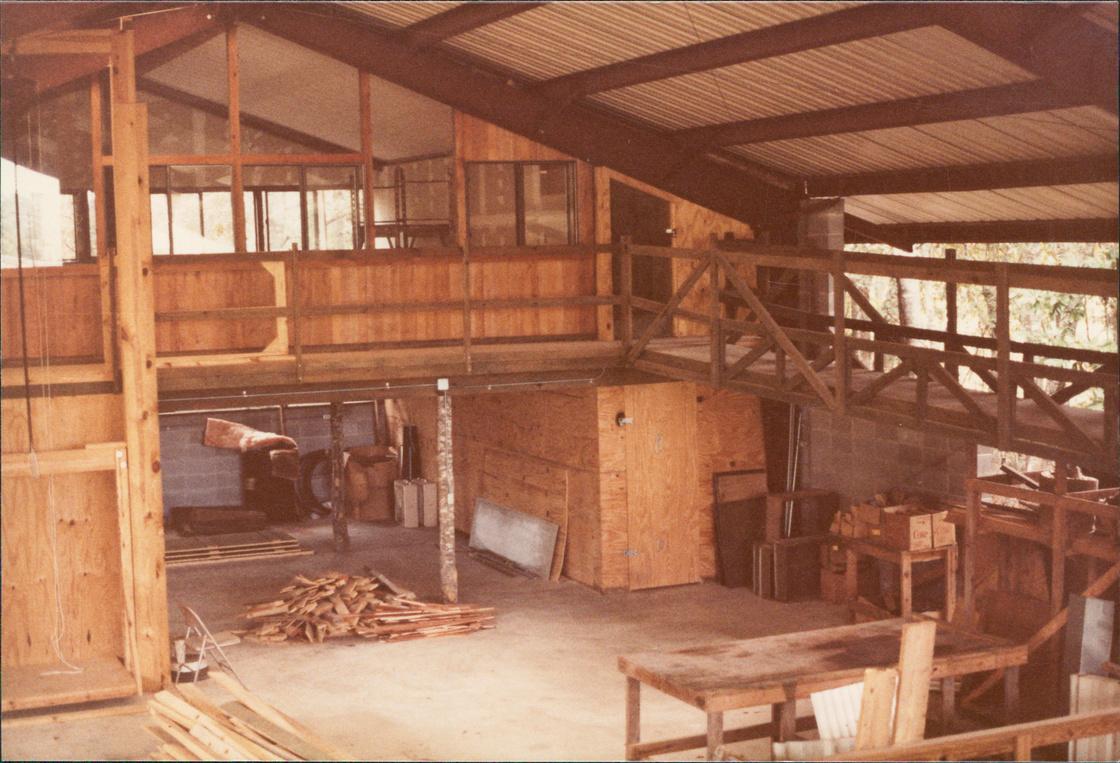

Determined to deepen his knowledge, Ishee immersed himself in the University of Illinois Small Homes Council publications, which taught him innovative building techniques that emphasized quality and avoided the monotony of mass production.
A friendship with the Braniger brothers, then owners of the Gulf Hills estate, would be pivotal to Ishee’s career. When the estate was subdivided into a community, Ishee had the first choice of the most scenic plots with preferential elevation, showcasing his discerning eye for location. Low roofs, open floor plans, and expansive lawns characterize his ranch-style homes. Standing out, these houses quickly gained attention and, by the mid-1950s, “Ishee Houses” were a sought-after commodity, celebrated for their craftsmanship and harmony with the landscape.
In 1962, Ishee faced a significant setback as a heart attack temporarily sidelined his ambitions. During his recovery, he sought to improve his skill set by studying design and perspective drawing with books his wife Gladys brought from the libraries at the University of Southern Mississippi. This period of introspection and education marked the emergence of his true creative genius, resulting in some of his best-known works.
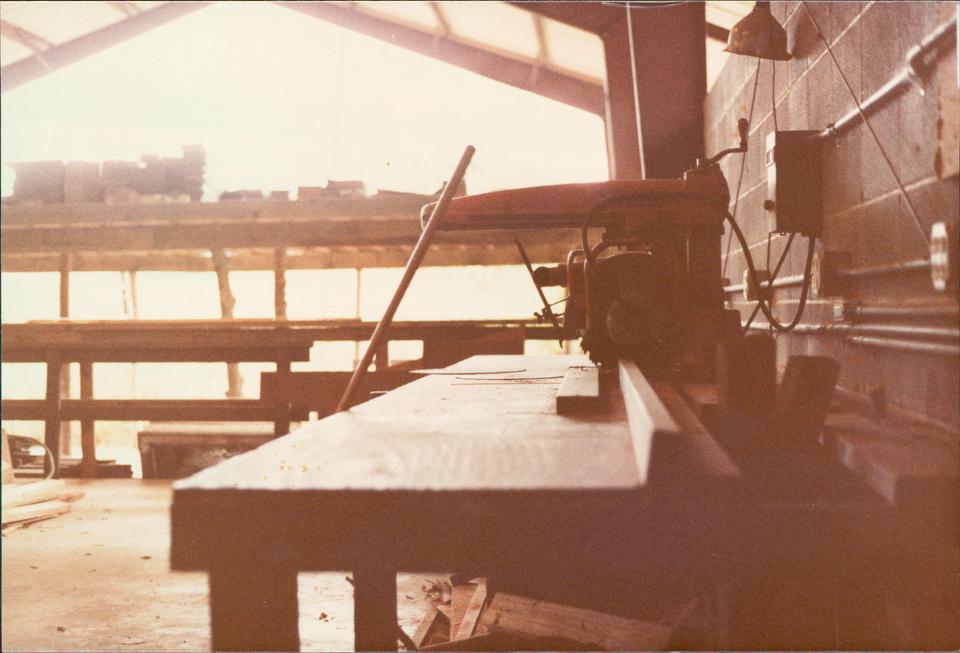
Ishee’s architectural philosophy that emerges in his ‘third period’ is deeply rooted in respect for nature and the individuality of both the homeowner and the land. Drawing inspiration from works, such as The Guide to Easier Living, he prioritizes simplicity and functionality. Now he champions the concept of “a house you don’t have to paint on a lot you don’t have to mow,” designing maintenance-free homes that reduce labor and stress for their owners. His innovative approach includes integrating homes into the existing landscape, preserving trees and natural vegetation, and utilizing challenging terrains as opportunities rather than obstacles
The workshop where Carroll Ishee
The workshop where Carroll Ishee designed projects and sketched out his designed projects and sketched out his works bringing so many homes to life. works bringing so many homes to life.
Courtesy of Ray L. Bellande
Courtesy of Ray L. Bellande

To keep costs manageable while maintaining high-quality materials, Ishee would craft custom cabinets, doors, and window units. Embracing sustainability, the use of natural materials, such as tree trunks for support beams and towel racks, begins appearing in his work. His designs during this period featured expansive windows that invite natural light and seamlessly blended indoor and outdoor spaces. Ishee’s homes are not mere structures but reflections of their environment, each one a unique testament to his vision and ingenuity. He was actively working on projects until a few months before his death in January 1982.
Ishee’s legacy as an architectural pioneer is celebrated in an exhibit at the Mississippi Maritime Museum in Pascagoula, Miss. This immersive display features life-size photographs that evoke the experience of walking through one of his homes, alongside other artifacts that highlight his innovative spirit. The exhibit, funded by a grant from the Mississippi Gulf Coast National Heritage Area, underscores the region’s rich cultural and architectural heritage.

Carroll Ishee’s journey to find his perfect career path, marked by perseverance, creativity, and a profound connection to the Mississippi Gulf Coast has left a lasting impression on the community. His homes stand as enduring symbols of his genius, blending functionality with harmony and proving that true artistry lies in the balance between human habitation and the natural world.



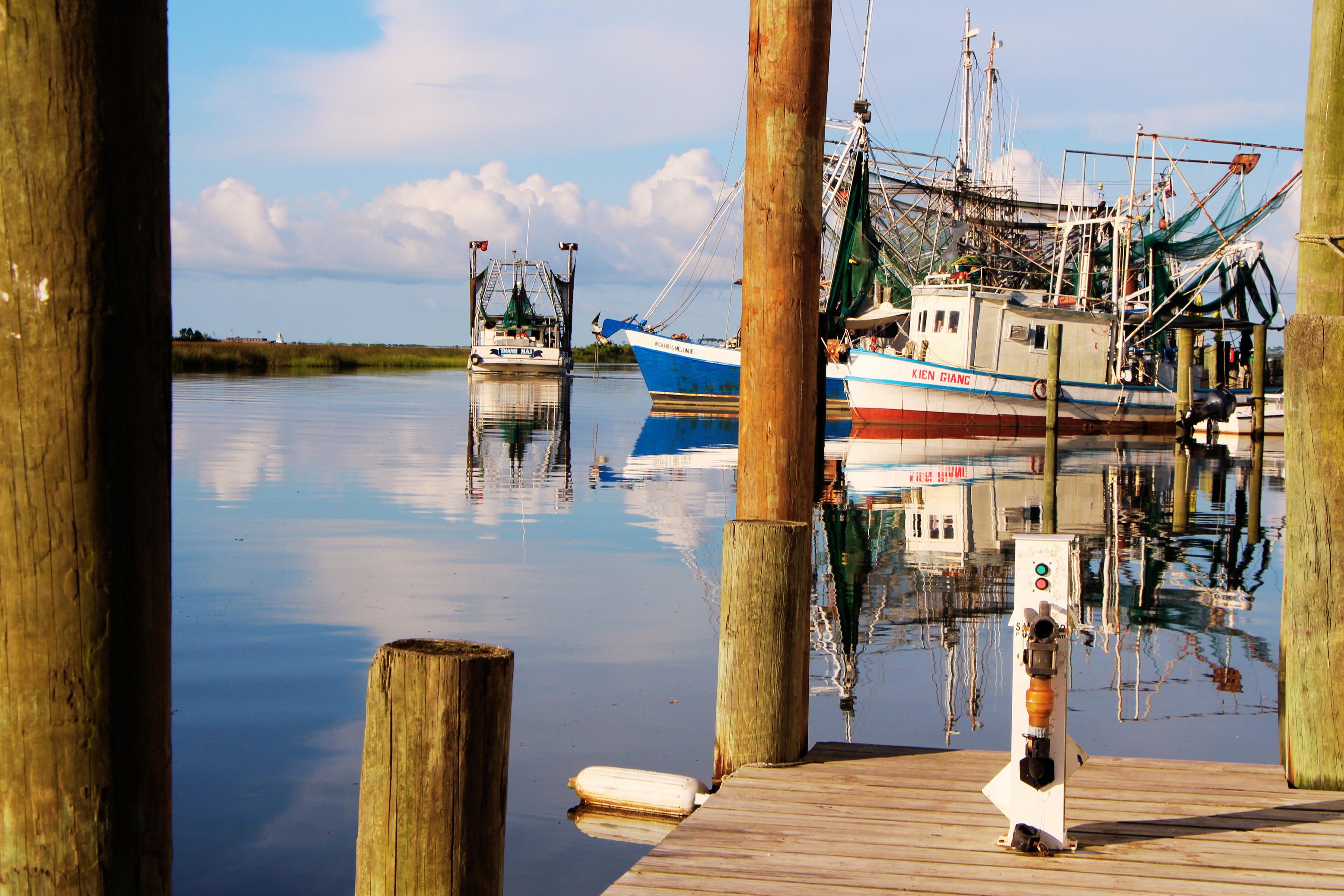
Most Mississippi residents, particularly along the Gulf Coast, are familiar with the Mississippi Department of Marine Resources (MDMR) and
have a basic understanding of the agency’s mission to enhance, protect and conserve the state’s marine interests.
Broadly speaking, the Mississippi Department of Marine Resources manages all marine life, public trust wetlands, and adjacent uplands and waterfront areas to provide optimal commercial, recreational, educational and economic uses of these resources that are consistent with environmental concerns and social changes. This includes monitoring marine life species and setting recreational and commercial size and catch limits, issuing fishing licenses, issuing wetlands permits, the control of invasive species, and the enforcement of all established regulations pertaining to these management duties.
This overview highlights some of the key responsibilities and resources the MDMR provides as a public service. It is not an exhaustive list, as the agency’s work extends beyond what is covered here, including significant programs like the state fish hatchery in Lyman, Miss., and the Grand Bay National Estuarine Research Reserve in southeast Jackson County. With so many important obligations carried out by this state agency that are too numerous to mention here, it would be wiser to visit the agency’s website at www.dmr.ms.gov for a deeper dive on the many aspects that fall within the realm of this state agency.
The Office of Coastal Restoration and Resiliency at the MDMR manages several programs that serve the state’s citizens and communities. Among these is the Clean Vessel Act (CVA) program, which plays an important role in promoting environmental stewardship and protecting Mississippi’s waterways. The CVA, enacted by Congress in 1992, allows the Secretary of the Interior, through the U.S. Fish and Wildlife Service’s Wildlife and Sport Fish Restoration program, to issue grants to coastal and inland states for construction, renovation, operations and maintenance of pump-out stations and waste reception facilities to dispose of recreational boater sewage in an environmentally safe manner. Funds for the CVA program are provided annually from the Sport Fish Restoration and Boating Trust Fund and are derived from excise taxes on fishing equipment, motorboat and small engine fuels, import duties, and interest on the fund.
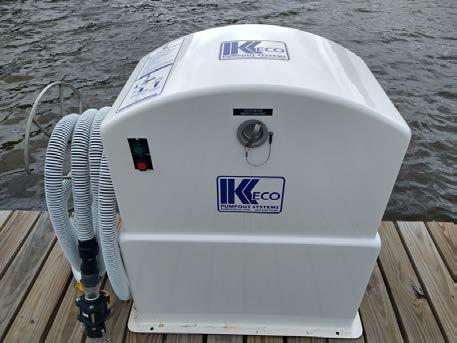
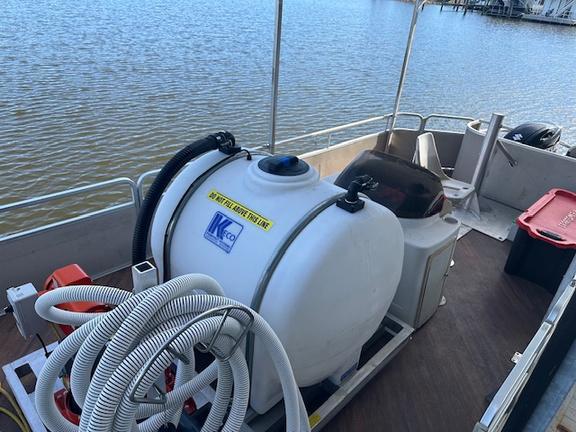
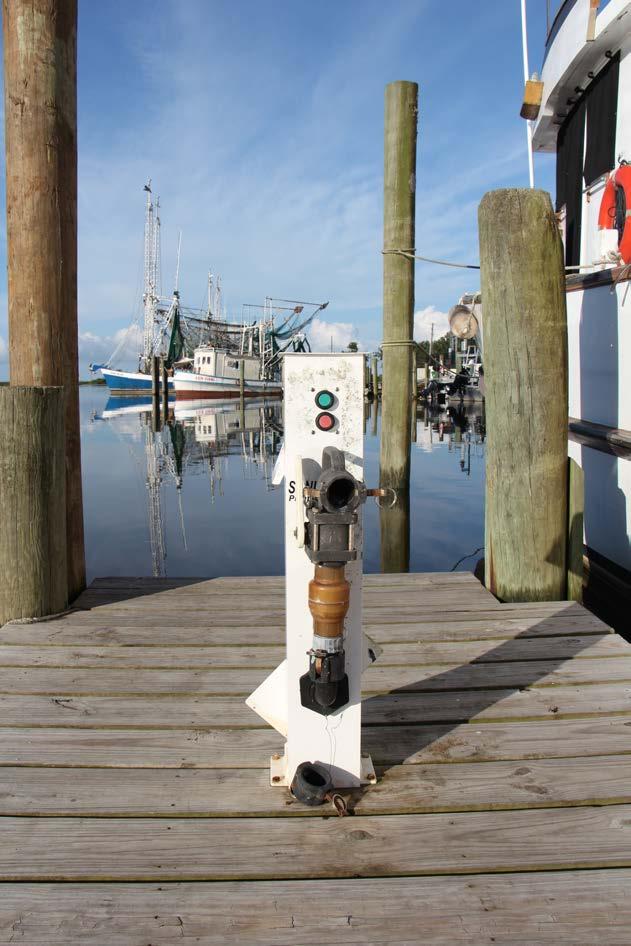
Pump-outs reduce the discharge of raw sewage into our national waters. Pump-out stations funded through the CVA program help protect the health and safety of our waterways and preserve sensitive fish habitats and shellfish beds that are so crucial to our environment and economy. In addition, pump-out stations also help to reduce the risk of public health hazards to humans by providing safe fishing and swimming areas that are free from pollution from recreational boats. CVA can base funds to provide educational information to the public about environmental pollution and health problems that result from direct sewage discharge into waterbodies and to provide the location of pump-out and other waste reception facilities. For the State of Mississippi, these services are fulfilled by the MDMR’s Office of Coastal Restoration and Resiliency. In partnership with local governments, public marinas and others, the MDMR Office of Coastal Restoration and Resiliency helps facilities provide boaters with a safe and sanitary method of sewage disposal.
Under the CVA program, marinas and harbors can apply for grant assistance to help finance the installation or repair of a pump-out system. CVA funding can cover up to 75% of the cost for these installations and repairs with a 25% match requirement from the facilities as long as those matching funds are not derived from other federal sources. The Mississippi Department of Marine Resources does have an online application for potential applicants that can be accessed on the website at: www.dmr.ms.gov/pump-outstations/
A full list of all marinas and harbors with pump-out stations is available on the site, as well for boaters in need of pump-out services in Mississippi.
Mississippi is blessed with a wealth of natural resources in our state waterways, and we should all take pride in maintaining the health and productivity of our state’s waters which have provided so much to our environment, economy, and quality of life. A clean and healthy ecosystem is all of our responsibility, so whether you are a marina operator or a boater, let’s ensure our state marinas have fully functioning pump-out systems and let’s make sure those systems are put to use.

If you are interested in applying for a pump-out installation or repair, you can visit the above-mentioned webpage or contact Andrew Barrett, MS Dept. of Marine Resources Office of Coastal Restoration & Resiliency, 228-523-4064, andrew.barrett@dmr. ms.gov



Words by Andrew Barrett
The Mississippi Department of Marine Resources (MDMR), Office of Coastal Restoration and Resiliency (OCRR) is working to improve boating access along the Mississippi Gulf Coast. The Boating Infrastructure Grant (BIG) Program and the Boating Access Program are key initiatives that enhance public access to Mississippi’s waterways by improving boat ramps, docking facilities, and parking areas, ensuring that both recreational and commercial boaters have safe and efficient access to coastal and inland waters.




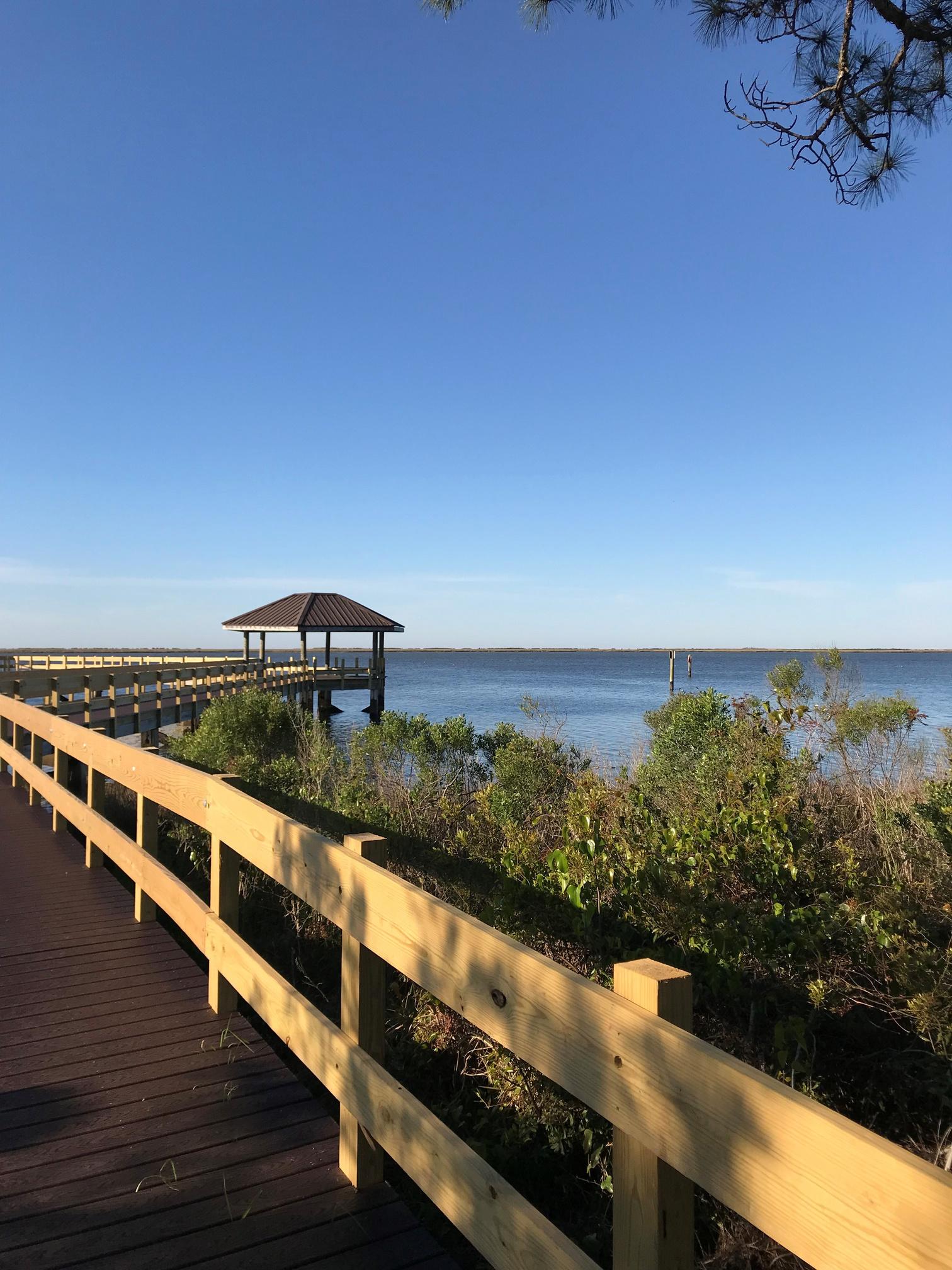

In 2010, just two weeks before the BP Oil Spill, Matthew hauled the Mystic to Pitalo Shipyard. As he pulled out the boat’s stern and opened it up, he dove headfirst into the project. In that moment, he found his passion for boat restoration. After completing the Mystic’s repairs, Matthew and Casey began participating in boat shows, building a network of connections that led to referrals and new restoration projects. Matthew pursued several apprenticeships under master shipbuilders, further honing his craft. Today, both he and Casey are now certified in wooden boat restoration and run Southern Salt Classic Boat Works, where they specialize in restoring historic boats.
The newest addition to the Mystic fleet is the renowned Pan American Clipper, a vessel with a rich history dating back to 1937 when it was built to replace the original Pan American vessel. Designed as a traditional wooden Biloxi lugger, the Clipper played an integral part of the Skrmetta family's excursion business for decades. By 2022, the Clipper was in need of extensive repairs. Recognizing its historical significance, Matthew and Casey purchased the Clipper, expanding the Mystic fleet and ensuring the boat would be restored with the care it deserves. Under the Hinton’s stewardship, the Clipper is in excellent hands and will soon be ready for all to enjoy once again.
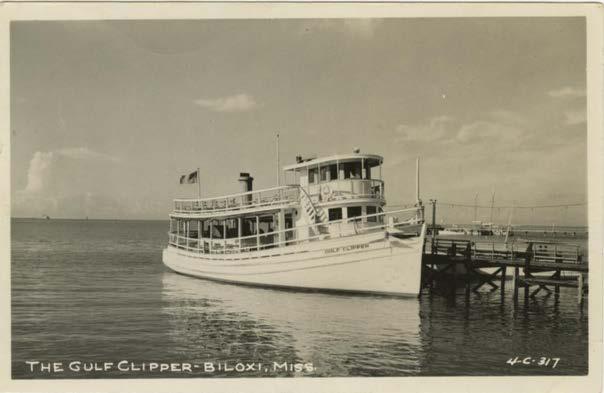
The Mystic has been a standout in numerous boat shows, earning top honors. It has consistently taken home First Place and Captain’s Choice awards at both the Biloxi Wooden Boat Show and Madisonville Boat Show. Its legacy of excellence dates back to 1952, when it was awarded Judge’s Boat at the Grand Island Tarpon Rodeo.
The Hintons recently took over another family venture, Hinton Paint in Ocean Springs, a true family affair. Their kids are actively involved, learning the ins and outs of family businesses while supporting each other in every endeavor. This shared commitment is more than just work; it is a way of life. They take pride in providing opportunities for people to experience the Mystic and cherish the joys of owning a family business within their community. Through their efforts, the Hintons are preserving heritage and traditions in a variety of meaningful ways.

Words by Andrew Barrett
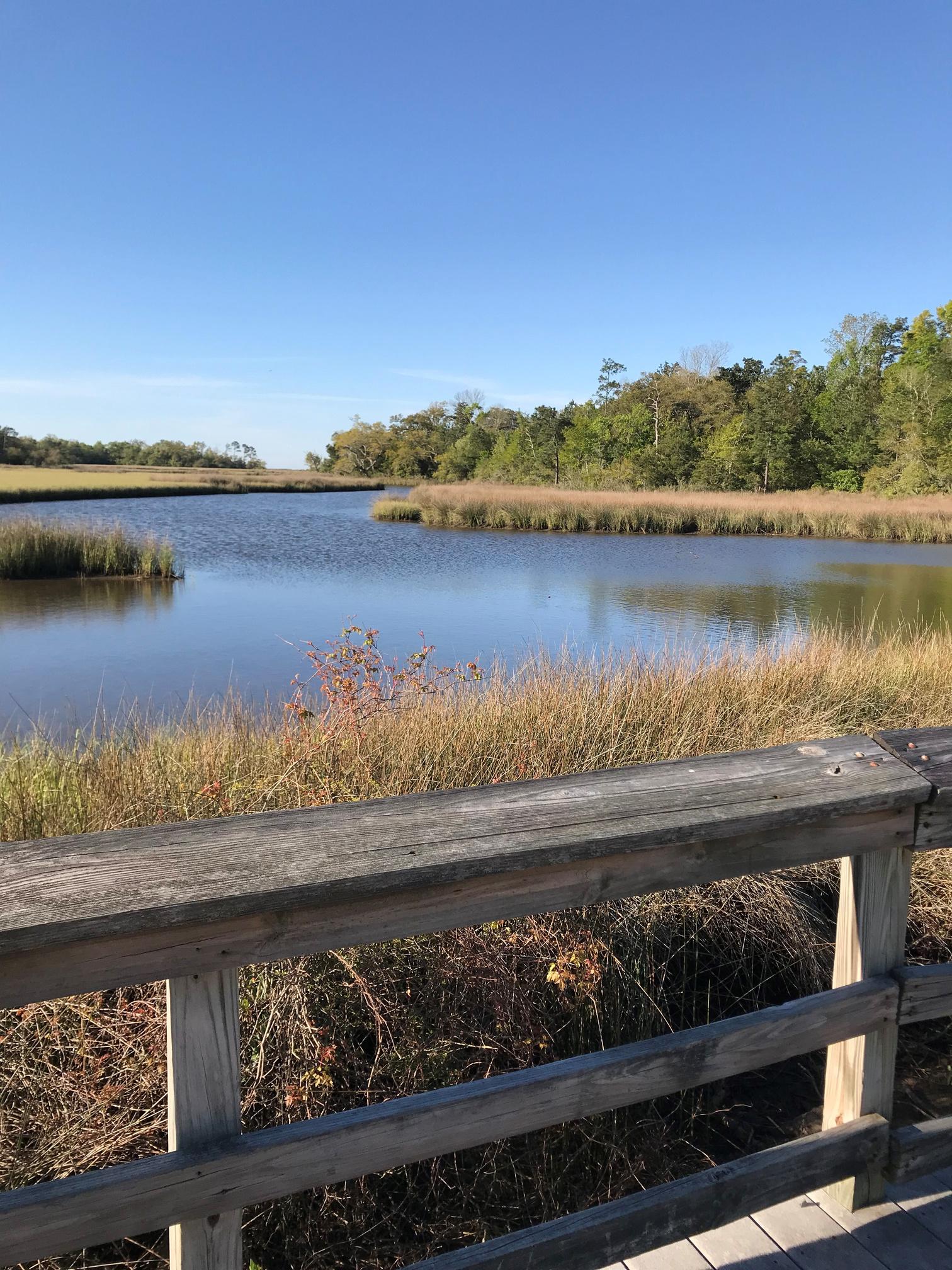
As part of the Mississippi Gulf Coast National Heritage Area’s Nature-Based Tourism effort, the Blueways program was established to provide explorers an unforgettable experience along miles of beaches, rivers, creeks, and bayous. There are currently 13 Blueways, or water trails, that have been mapped out for recreational canoers and kayakers within the six coastal counties in Mississippi. Here is a quick look at the Davis Bayou Blueway in Jackson County, Miss.
Davis Bayou, in the southwest corner of Jackson County, Miss., is an ideal Blueway for the beginner or intermediate paddler.
Developed by the National Park Service, National Park Foundation and Heritage Trails Partnership, and made possible in part by a grant from the National Park Foundation through the generous support of the Coca-Cola Foundation, the Davis Bayou Blueway offers an excellent example of a unique and productive ecosystem.

Words by Cole Moody
as a kid, I was obsessed with the idea of finding shark teeth on the beach. On every trip to the
beach with my parents, I kept my eyes glued to the sand, hoping to spot one, but I never did. Years later, while attending the University of Southern Mississippi’s Long Beach campus, I decided to step onto the beach after class.
At first, my searches were unproductive. I didn’t know where to look. I doubted whether shark teeth even washed up on our beaches. Then, on my third trip, during an unusually low tide, I saw a small, blue-gray triangle peeking through the sand. A Bull shark tooth. My first real find. At that moment, I felt like a kid again, and I knew I wasn’t stopping there.
Most shark teeth found on the beach are fossils, often dating back to the Pleistocene Epoch (1.8 million to 11,700 years ago). Unlike modern teeth that decay quickly, fossilized shark teeth survive because minerals like iron and phosphate replace the original material over thousands of years, giving them black, blue, or tan hues. Some fossils found further inland, like those in northern Mississippi, date back to the Cretaceous Period, around 75 million years ago when dinosaurs still roamed the Earth.
The shape of a tooth can also reveal which shark it came from. Most of mine are from Bull and Lemon sharks, but I’ve also found Hammerhead, Great White, and Sand Tiger teeth. Each species has unique teeth suited for its diet, from the serrated edges of Great Whites designed for cutting, to the long, needle-like teeth of Sand Tigers for gripping slippery fish.
Cole shows off two Sand Tiger Shark Cole shows off two Sand Tiger Shark teeth found along the beach in Long teeth found along the beach in Long Beach, Miss. Beach, Miss.
Beachcombing is about more than just finding treasures, it’s about making memories, learning together, and sharing the thrill of discovery. The Gulf Coast holds millions of years of history beneath the sand, waiting for curious hands to uncover it. So gather the family, grab a bucket, and start your own tradition. You never know what the tide will bring!

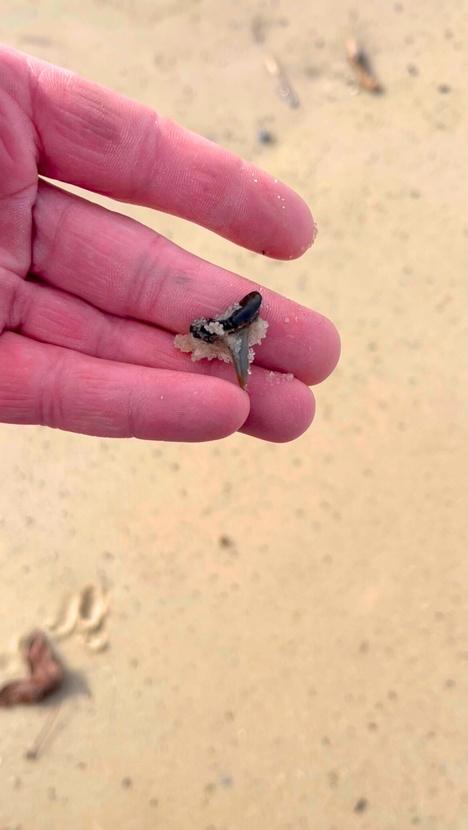

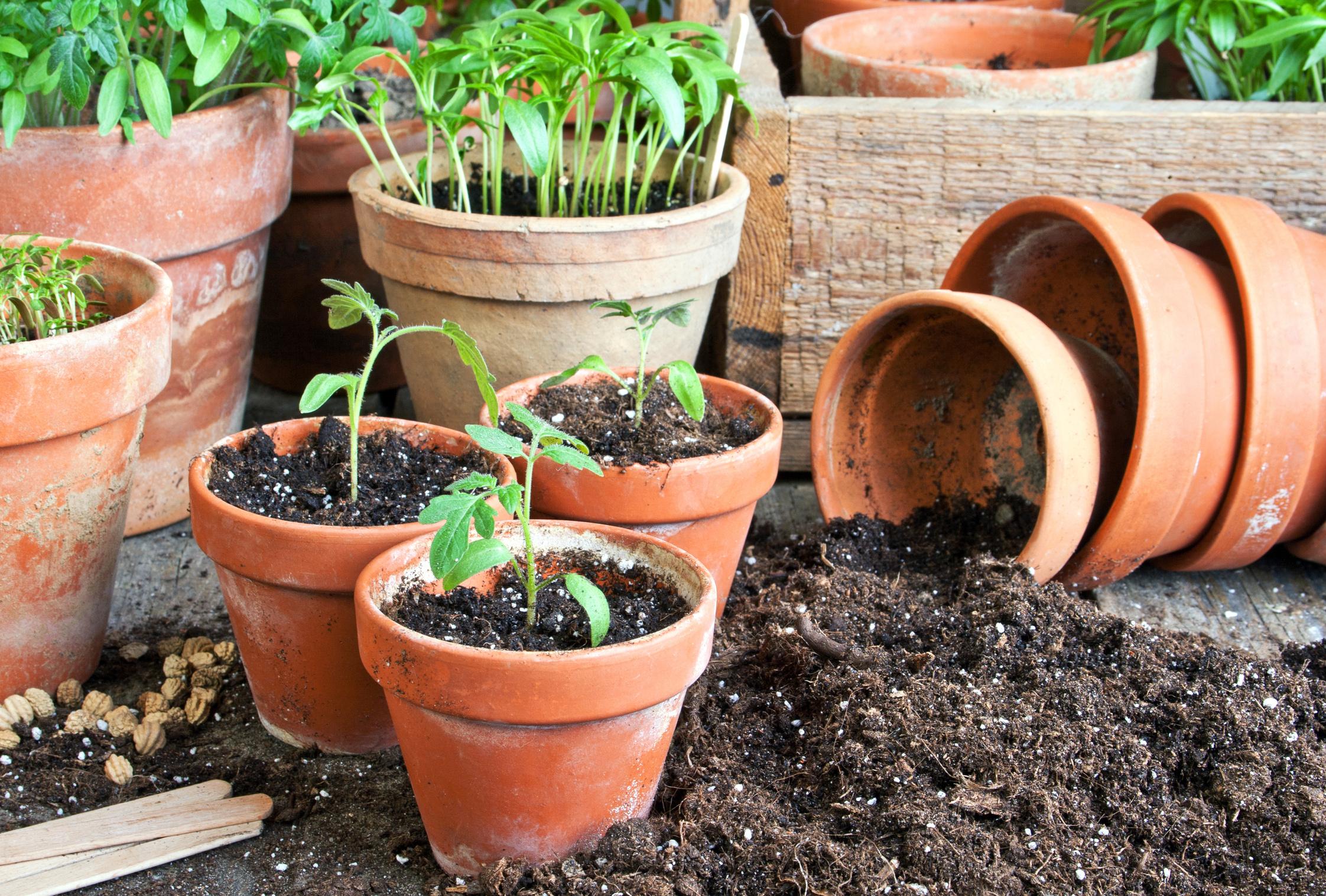
Words by Chelsea Prince
t was cold, and the leaves outside had faded from vibrant green to muted shades of beige and gray, blending seamlessly with the swaying
Spanish moss and the texured bark of the trees. Despite the dreariness of winter, a glimmer of warmth and hope broke through in the form of camellias. Their bright colors and deep green foliage stood out in many local landscapes, offering a cheerful contrast to the somber hues of the season.
While winter has its pleasantries, I always breathe a sigh of relief when I cross the railroad tracks into town and am greeted by the most beautiful splash of color, a sure sign that the seasons are changing.
The winter of 2021 was no exception. Azaleas were beginning to bloom, bulbs were making their way through the earth, and climbing roses gracefully wrapped themselves around an old pecan tree, creating a living masterpiece.
Passing this particular garden each morning had become part of my routine. Occasionally, I would spot the artist behind the beauty, an older woman, tending to her plants, pulling weeds, pruning, and planting with meticulous care. One afternoon, I found her on her front porch, gently rocking in her chair and soaking in the sunshine. Gathering my courage, I stopped to tell her how much joy her garden brought me. I informed her that she had created something that would often brighten my day. We formed an instant friendship. Before I knew it, she was filling my car with cuttings to propagate and educating me about how each plant required specific care.
That first encounter with Mrs. Willie Mae Buxton wasn’t the last. Her generosity led to more visits and, of course, more plants. Mrs. Willie Mae has since passed away, but every time I spot one of her plants in my yard or drive by her house, I think of her kindness and the legacy she left behind. I’ve since taught my children how to propagate, passed along cuttings from her garden to others, adding to their long lineage.

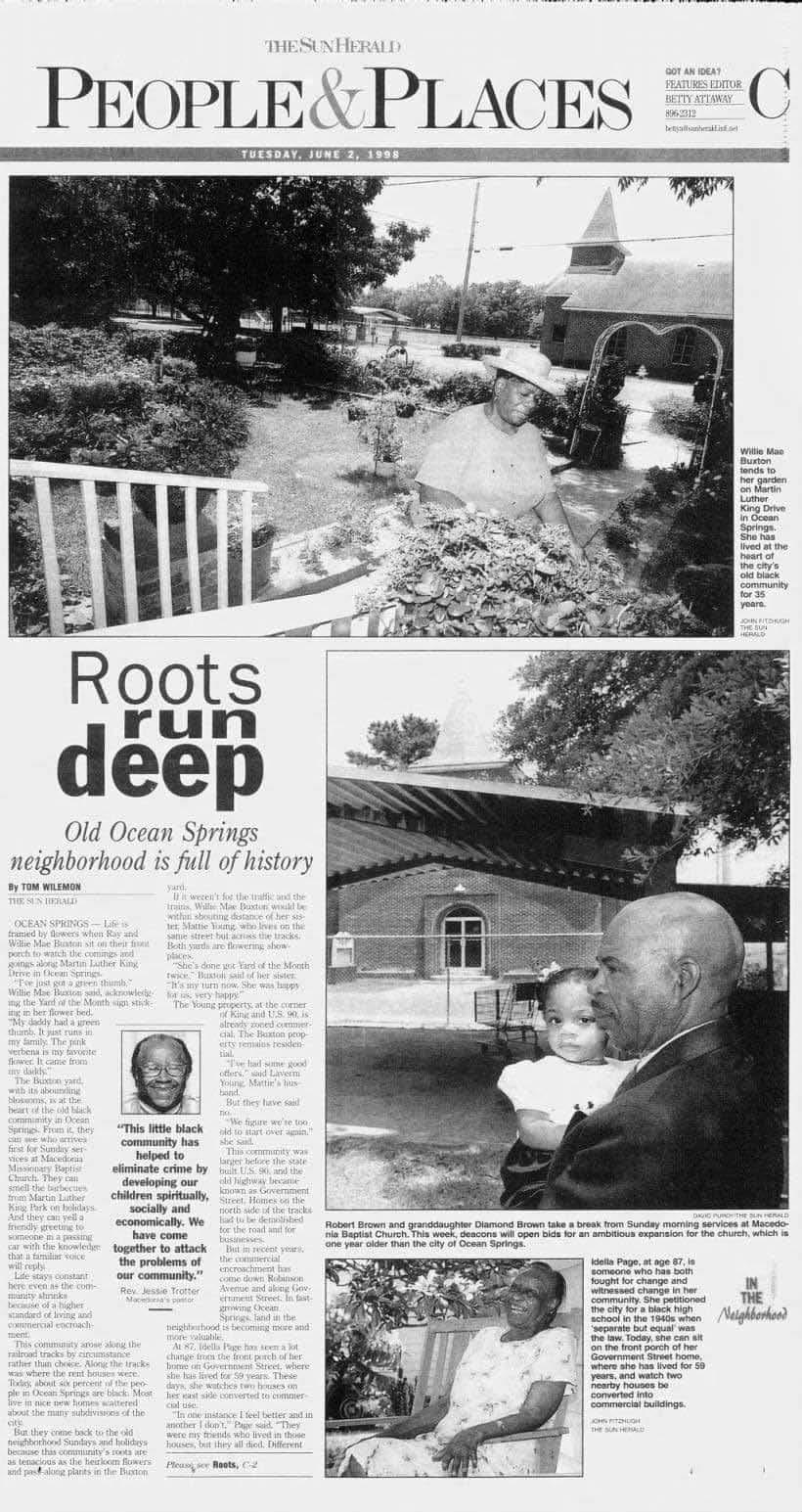


In the south, there’s a cherished tradition of sharing plants with neighbors and friends. This “passalong plant” ritual dates back to times when nurseries offered few heirloom or native varieties, making a neighbor’s garden the best place to find them.
What makes passalong plants so special are the stories they tell. My dear friend Lanis Noble, a gifted writer and genealogist, has shared countless tales of his childhood growing up south of the bayou in Fontainebleau, just outside Ocean Springs. One birthday, Lanis planted a camellia in my yard, a descendant of his grandmother Marcella’s garden, still thriving at the family homestead off Noble Road. More recently, after the passing of his cousin JoAnn Crimm, Lanis gifted me a cutting from a Purple Dawn camellia originally grown in their grandmother Henrietta’s garden. These living heirlooms offer comfort and joy that will outlive me, continuing to tell stories long after I am gone.
Like many beloved Southern traditions, passalong plants come with their own set of rules and superstitions. The hardest one for me to follow? Never thank someone for a passalong plant. They say expressing thanks directly prevents the plant from growing. Instead, you might say, “This will look beautiful in my garden,” or simply, “I’ll take good care of it.” In their book Passalong Plants, by Steve Bender and Felder Rushing explain that while many plants have been cherished for generations, only those easy to propagate and share become true passalongs, offering a rare chance to both divide and multiply at once.
Mrs. Willie Mae also passed along another vital lesson: always ask permission before taking a cutting from someone else’s garden, or better yet, wait until it’s offered. That patience and respect are part of what make the tradition so meaningful.
Next time you admire a beautiful garden, don’t miss the opportunity to tell the gardener how much you appreciate their work. You might just make a new friend and bring home a new plant. And when someone you love needs a little cheer, consider sharing a cutting from your own garden. It’s a simple gesture that can offer comfort, joy, and a connection that lasts far beyond a single season.
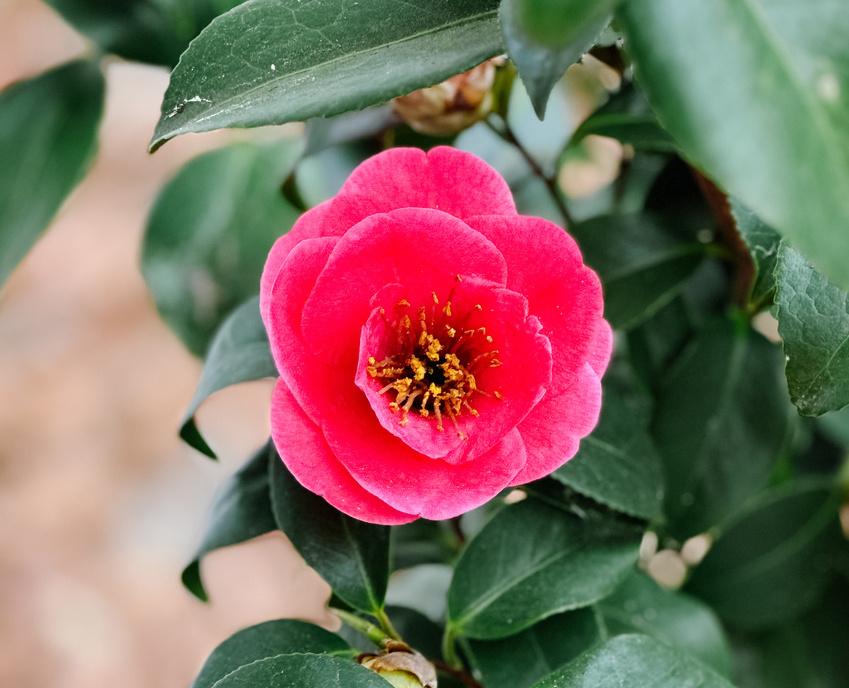
There are countless ways to propagate and thousands of plants worth sharing. These three methods, using varieties from Mrs. Willie Mae’s garden, have given me a 100% success rate...why not give them a try?
Take one of the larger leaves from the base of the plant
Lay the leaf on well- draining potting soil
Place in bright indirect sunlight
Lightly moisten soil with water and only water when soil is completely dry
Place in pots with full sun

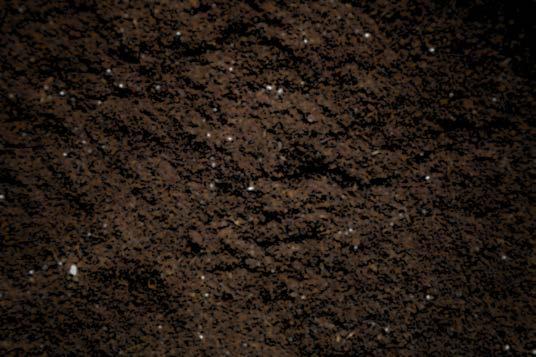
Cut a 5-6 inch cutting from the stem
Remove leaves from the base of the stem except for a few at the top
Place stem about 3 inches deep in well-draining soil
Place in indirect sunlight
Keep soil moist but not oversaturated
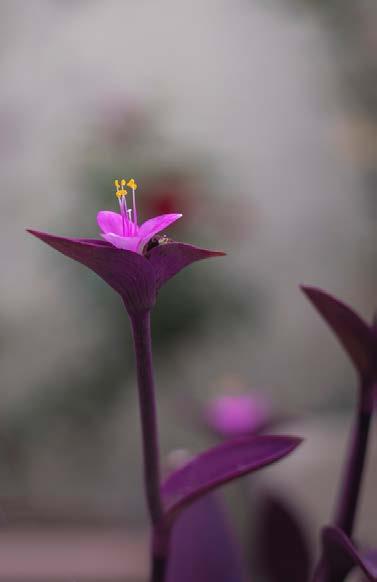

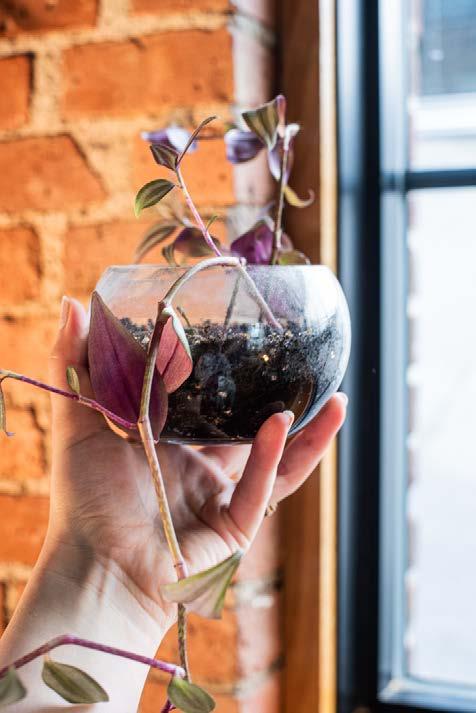
In late fall or early summer, cut about 8 inches of the stem off of the plant below a leaf node
Remove all leaves except the top two
Place in a clear vase or jar near a window with indirect sunlight
Clean water periodically
Roots will begin to form in about a month
Plant it in soil and full-part sun
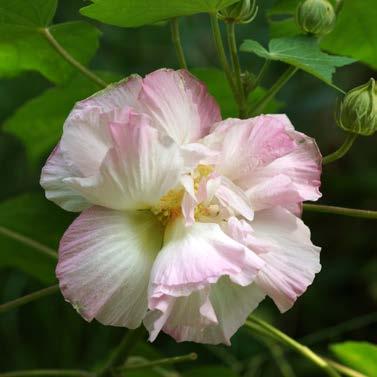

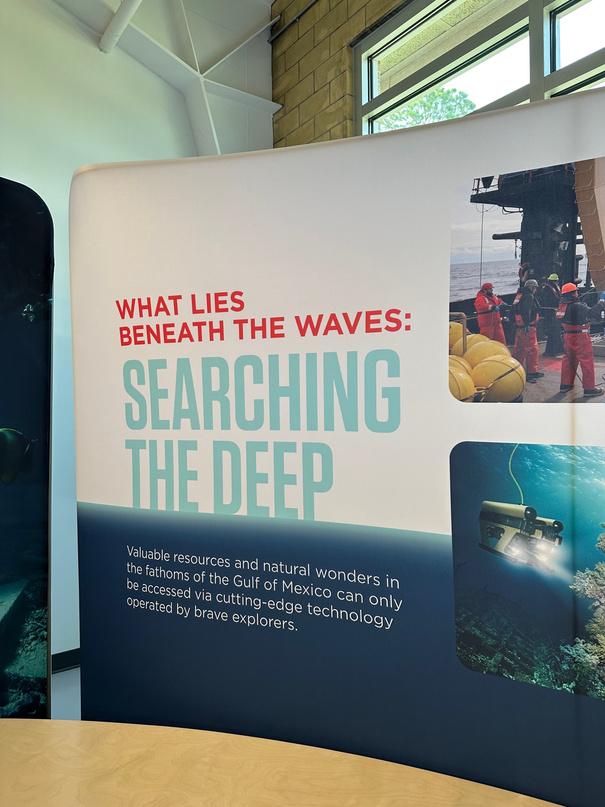

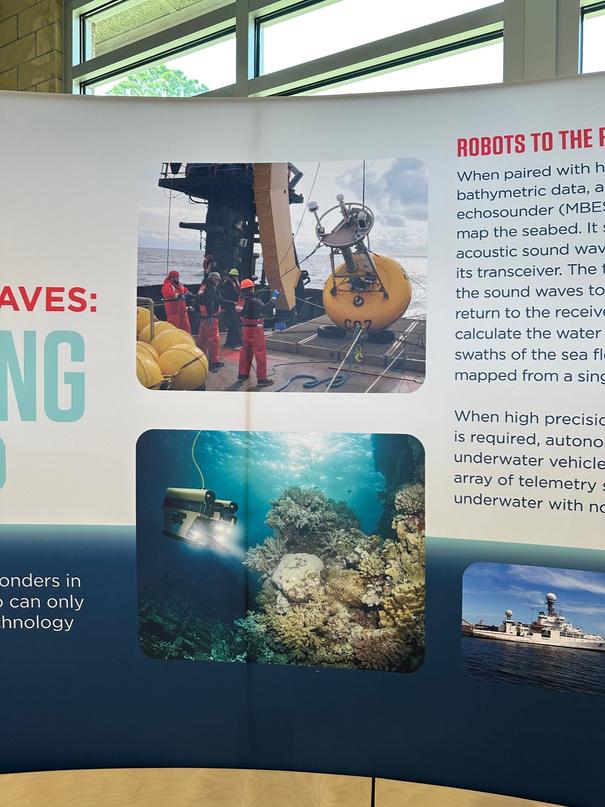
Discover, Stamp, and Spot a Merman at the Mississippi Shipbuilding & Maritime Center!
Step into the world of maritime innovation and coastal heritage at the Mississippi Shipbuilding & Maritime Center in Pascagoula to collect your exclusive passport stamp!
This dynamic museum showcases the Gulf Coast’s rich shipbuilding legacy, highlighting the craftsmanship, engineering, and history behind the vessels that shaped our coast. While you’re here stamping your way through history, keep a sharp eye, you might just spot a legendary merman hidden among the exhibits!
Whether you're a National Park Passport collector, a maritime history enthusiast, or simply looking for a unique coastal experience, this stop is a must-see! Visit, explore, and take home a fascinating story (and a stamp!) you won’t soon forget.




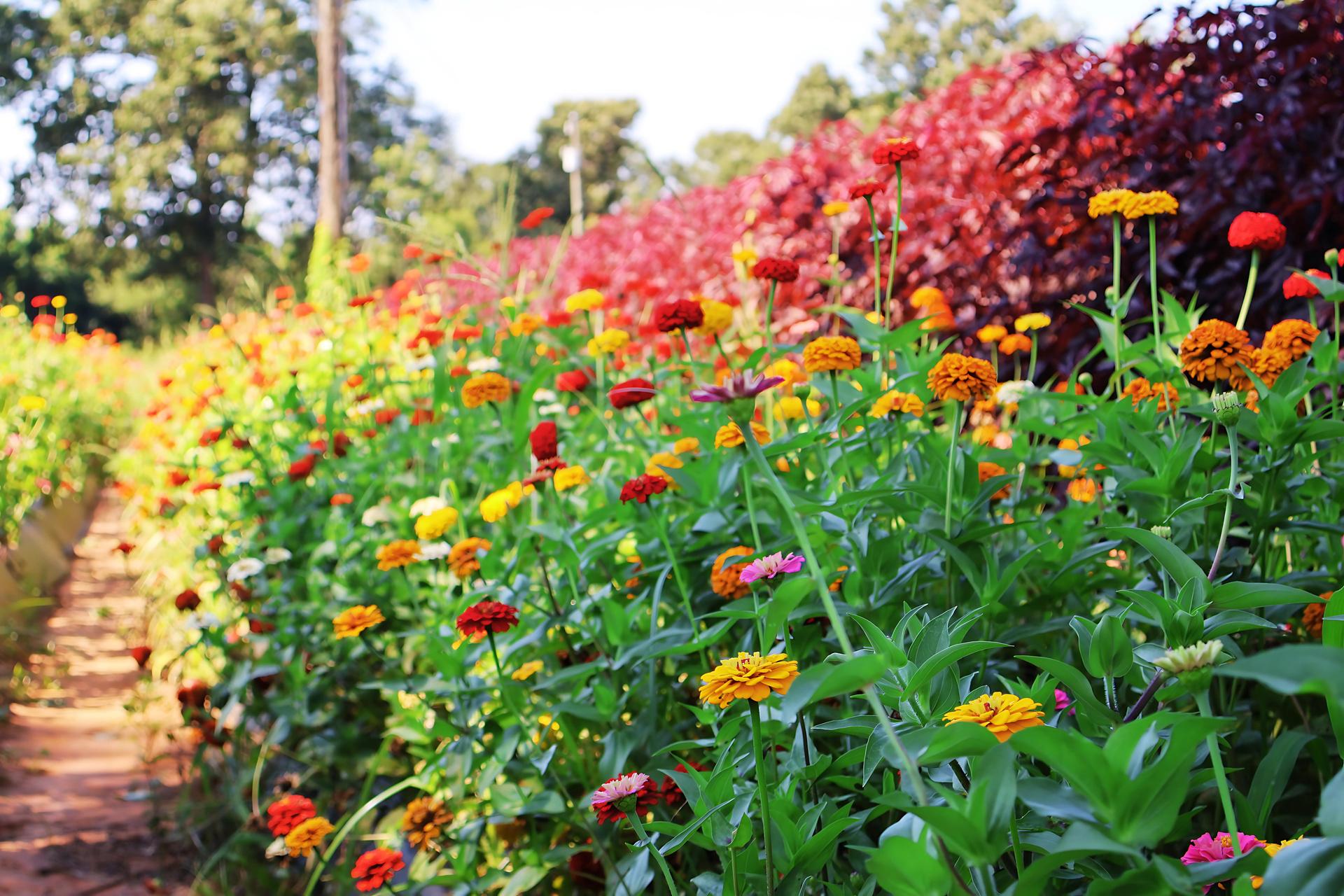

Words by RoxAnn Rankin Wicker, Photos by Cole Moody
pending a day surrounded by vibrant blooms, buzzing pollinators, and the gentle hum of nature
is a refreshing experience for anyone looking to reconnect with the world around them. Whether you're a photographer searching for the perfect shot or someone seeking a peaceful retreat, picking flowers is a therapeutic and rewarding activity.
Last year marked the inaugural season for family-owned, Courtney Farms' "You Pick Flower Fields," located off Beaver Dam Road in Lucedale. The overwhelming support and enthusiasm from the community made it an instant success. Courtney Farms grows a variety of flowers from seedlings in their greenhouse, including Zinnias, Basil, Gomphrena, Sunflowers, Ageratum, Soluna Mix, and Celosia, among others. Visitors are provided with a bucket and are encouraged to bring their own shears or scissors to hand-pick their floral selections.
Our intern, Cole Moody, and I had the opportunity to experience the joy of cut-flower therapy firsthand. While I was meeting Mrs. Courtney and her daughter, I learned about the different flowers and how the test season exceeded expectations, Cole captured stunning images of bees and butterflies flitting from bloom to bloom, showcasing the vital role pollinators play in these fields.
This experience wasn’t just a day out in the field, no pun intended, it was about making memories. While on-site we met a mother and daughter spending quality time together, a couple enjoying a peaceful day in nature, and a bridal party picking flowers, the act of gathering blooms.
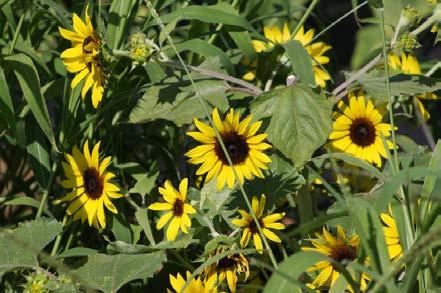
With affordable pricing and a wide variety of flowers to choose from, Courtney Farms' previous pricing included a wide-mouth mason jar for $15 and an open bucket for $30, an incredible value considering the beauty and quantity of flowers available.
While Courtney Farms in Lucedale offers a fantastic experience, another great option for flower picking is our Outpost Partner, Coastal Ridge Farm in Picayune. Both farms provide the opportunity to stroll through vibrant fields, select beautiful blooms, and appreciate nature. Supporting these farms not only brings joy to visitors but also helps sustain local agriculture and small businesses.
Seasonal availability varies based on weather conditions, so it's best to check with local farms for their operating hours and schedules. Social media pages for Courtney Farms and Coastal Ridge Farm provide up-to-date information on when fields are open and what flowers are in bloom. For those looking to unplug and embrace a simple, joyful activity, spending time in a flower field is a perfect way to do so. Whether it's a casual outing or a special occasion, picking flowers offers a chance to slow down, appreciate nature, and create lasting memories.

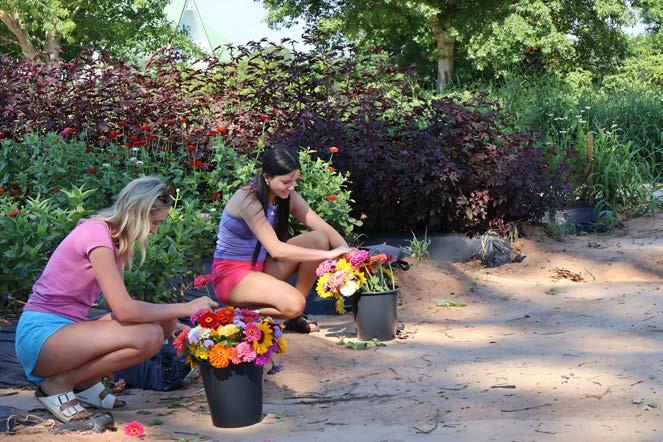
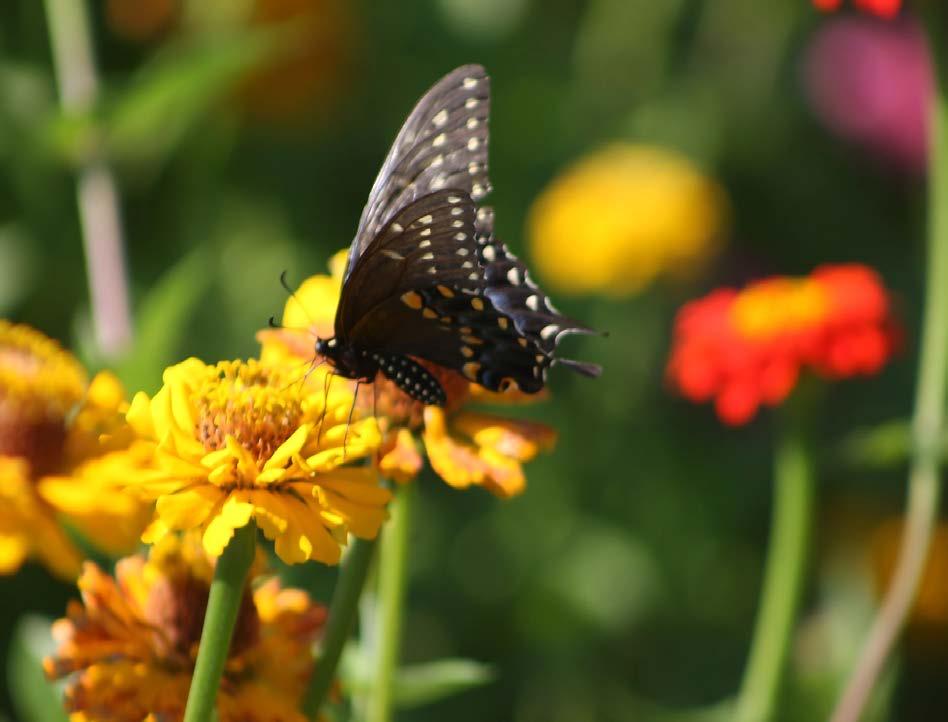
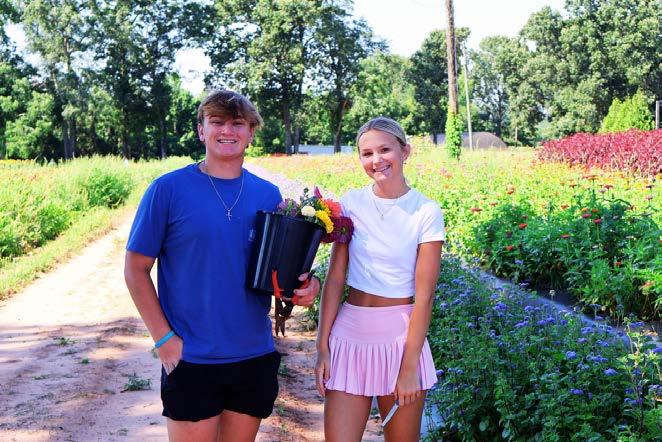
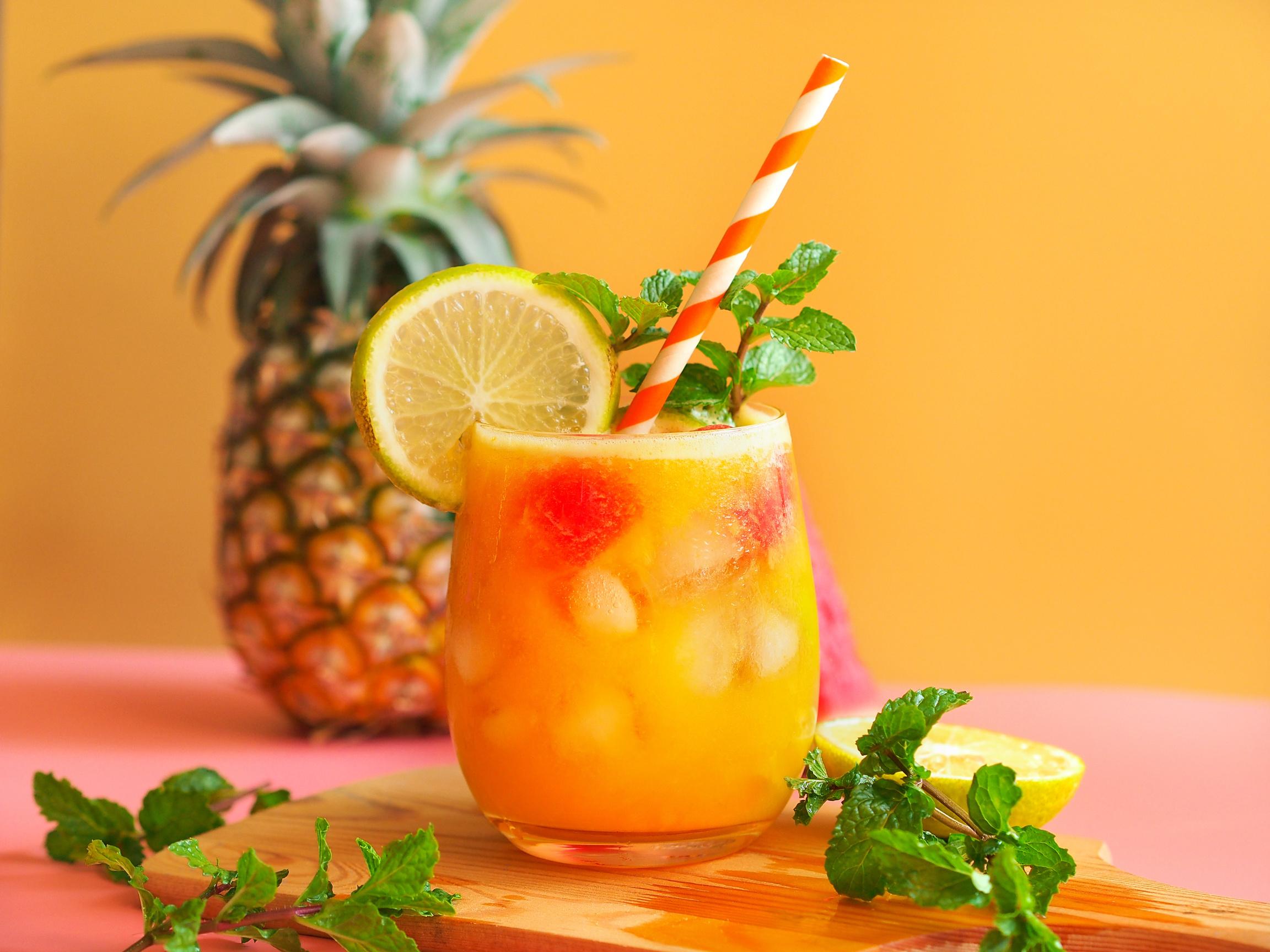
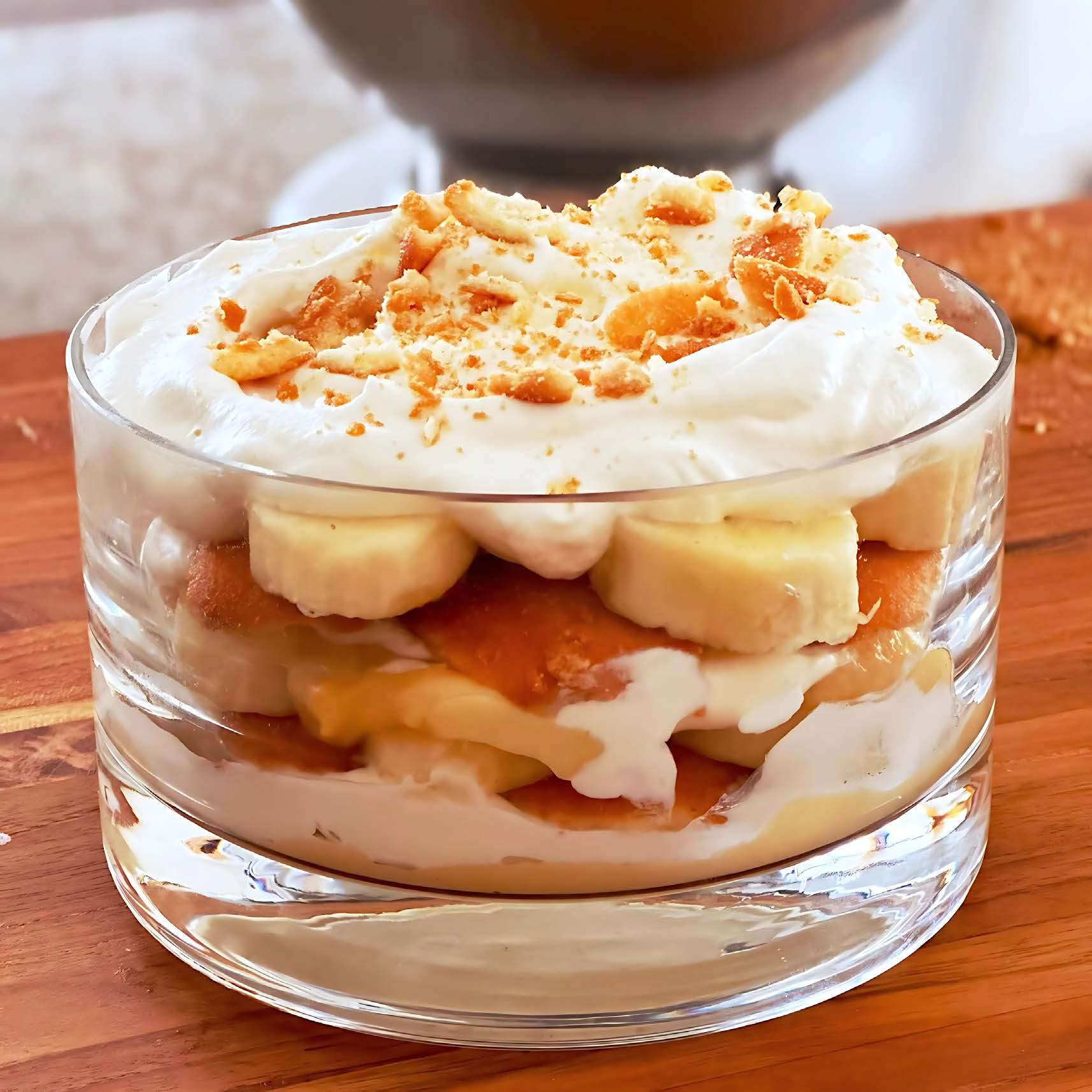

Recipe & Photo Courtesy of Cameron Coley, Mississippi Seafood Marketing Program, MDMR
Ingredients:
Crab Cakes
4 oz Gulf crab meat mixed
1 egg
1/2 cup panko breadcrumbs
1 Tbsp toasted sesame seeds
2 Tbsp mayonnaise
1 Tbsp fresh cilantro, chopped
1/2 Tbsp fresh ginger, chopped
1 green onion, finely chopped
1 Tbsp sweet relish
1 tsp Dijon mustard
1 tsp garlic powder
salt & pepper to taste
1/3 cup plain, Greek yogurt
1 tsp sriracha
1 tsp fresh cilantro, chopped
Salad
1/2 cup arugula
2 Tbsp peanuts, chopped
2 Tbsp bell pepper, diced
2 Tbsp cucumber, diced
2 Tbsp shelled edamame
1/2 Tbsp fresh lime juice
1/2 tsp sesame oil
dash of salt
Mix all crab cake ingredients and allow to chill in fridge for 30 minutes.
Mix plain Greek yogurt with Sriracha and cilantro . Toss all salad ingredients together.
Preheat oven to 375 degrees. Spray a baking sheet with cooking spray. Form crab mixture into cakes, place on baking sheet and bake on each side about 10-12 minutes.
Slice avocado. Plate salad, top with crab cakes. Top crab cakes with sauce .
Recipe by RoxAnn Rankin Wicker
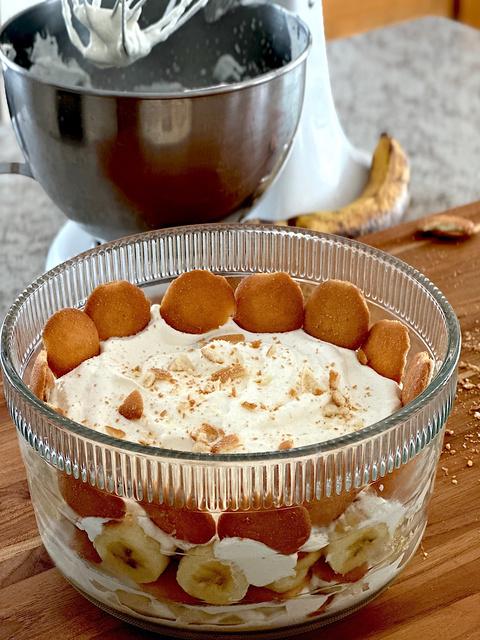
Let me tell y’all something, there is nothing in this world that brings me more comfort than a spoonful of banana puddin’. And yes, down here, we call it "puddin’" because it's just that special. This recipe? It’s the one. Rich, creamy, almost custard-like, but somehow even better, it’s pure decadence.
I stumbled across a version of it a few years back, but after a little tweaking to suit my taste, it became my signature dessert. Whether it’s for Sunday supper, a bridal shower, or just a sweet treat waiting in the fridge, this banana puddin’ never disappoints. And trust me, once you try it, you’ll see why.
Now, here’s the secret: ice-cold water. It makes all the difference when mixing the sweetened condensed milk, and the rest is just a little patience.
Ingredients
4 bananas, sliced
1 box of Nilla Wafers
1 can of sweetened condensed milk
1 tub of Cool Whip
1 box of family-size vanilla Jell-O pudding mix
1 tsp. vanilla extract
¼ cup ice-cube-cold water
1. Add the puddin’ mix, vanilla extract, and whisk (or use a hand mixer) until smooth. Refrigerate for 30 minutes.
In a large mixing bowl, combine the sweetened condensed milk and ice-cold water. Stir well.
2. While the mixture chills, slice the bananas and set aside. Reserve about ¾ of the Nilla Wafers for layering.
3. Once the puddin’ has set, gently fold in the Cool Whip until the mixture is smooth and uniform in color.
4. In your dish of choice, begin layering: a base of puddin’, followed by Nilla Wafers, then banana slices. Repeat until you reach the top.
5. Line the rim with whole wafers and crush the remaining cookies to sprinkle over the top.
7.
6. Refrigerate overnight for the best flavor….if you can wait that long!
Y’all, this is the kind of dessert that makes memories. Serve it up with a big ol’ spoon and a whole lotta love. Enjoy!

This creamy, chilled strawberry icebox pie from Southern Living is the perfect summer dessert. refreshing, tangy, and just sweet enough, with a salty pretzel crust that adds a satisfying crunch. Made with fresh strawberries, cream cheese, and sweetened condensed milk, it's finished with a layer of whipped cream and best served with sugared berries on the side. A true Southern classic, icebox pies are easy, no-bake treats named for the old iceboxes that kept them cool long before modern refrigeration. Recipe and photo courtesy of SouthernLiving.com
2 cups finely crushed pretzel sticks
¼ cup firmly packed light brown sugar
¾ cup butter, melted
2 cups sliced fresh strawberries
1 can sweetened condensed milk
8 oz. cream cheese, softened
4 Tbsp. plus 1 tsp. strawberry gelatin
(from 1 [3-oz.] package
2 cups whipping cream, divided
⅓ cup granulated sugar
Step 1 - Bake crust
Preheat oven to 350 degrees. Stir together first 3 ingredients; firmly press on bottom, up sides, and onto lip of a lightly greased 10-inch pie plate. Bake 10-12 minutes or until lightly browned. Remove from oven to a wire rack, and cool completely (about 30 minutes).
S tep 2 - Make strawberry puree
Process strawberries in a food processor until finely chopped, stopping to scrape down sides as needed.
Step 3 - Mix milk & strawberries
Beat condensed milk and next 2 ingredients at medium speed with an electric mixer until smooth. Add strawberries; beat at low speed just until blended. Transfer to a large bowl.
Step 4 - Finish icebox filling
Beat ¾ cup whipping cream at high speed until soft peaks form; gently fold whipped cream into strawberry mixture. Spoon into prepared crust. Cover and freeze 8-12 hour or until firm.
Step 5 - Add whipped topping to pie
Beat remaining 1 ¼ cups whipping cream at high speed until foamy; gradually add granulated sugar, beating until soft peaks form. Spread over pie. Freeze 1 hour or until whipped cream is firm.
